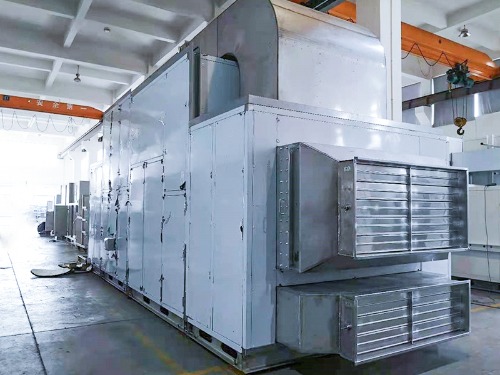A lithium battery rotary NMP (N-Methyl-2-pyrrolidone) recovery unit serves an important function in the lithium battery manufacturing process. Here are the key functions of this unit:
NMP Recovery: Lithium batteries often require the use of NMP as a solvent during electrode preparation and other manufacturing processes. The NMP recovery unit is designed to recover and recycle the NMP solvent used in these processes. The unit employs a rotary distillation process to separate NMP from impurities, such as electrolyte residues and other contaminants.
Solvent Purification: The recovery unit ensures the purification of the NMP solvent by removing impurities and contaminants. This is crucial because the quality of the solvent directly affects the performance and safety of the lithium batteries. Purifying the solvent through the recovery unit helps maintain the desired solvent properties for consistent battery production.
Cost Reduction: The NMP recovery unit plays a significant role in cost reduction for lithium battery manufacturers. By recycling and reusing the solvent, the unit minimizes the consumption of new NMP, resulting in cost savings over time. Additionally, the unit helps reduce waste generation and disposal costs associated with used NMP.
Environmental Sustainability: Lithium battery manufacturing involves the use of chemicals, and ensuring environmental sustainability is a priority. The recovery unit promotes sustainable practices by reducing the overall consumption of NMP and minimizing waste generation. By recycling and purifying the solvent, it helps minimize the environmental impact of the manufacturing process.
Process Efficiency: The NMP recovery unit enhances the overall efficiency of the lithium battery manufacturing process. By recycling the solvent, it ensures a consistent and readily available supply of NMP, eliminating the need for frequent procurement. This improves production continuity and reduces downtime associated with solvent unavailability.
Safety Compliance: NMP is classified as a hazardous material due to its flammability and potential health risks. The recovery unit contributes to safety compliance by reducing the handling and storage of large quantities of NMP. By effectively recovering and reusing the solvent, it minimizes the exposure of workers to potentially harmful substances.


Application:
The equipment is suitable for recovery of NMP organic solvent recovery in lithium battery manufacturing which can help users to achieve standard discharge and resource recovery. The device has simple structure, and obtain green and safe discharge without any changes to the existing production which eliminates environmental worries, reduces waste and saves energy.
Product principle:
Solvent recovery: we use the primary cooling recovery device (heat exchanger, cooling water cooler, chilled water cooler) to condense part of NMP from the air, and after the single-stage NMP adsorption rotor, the concentration of NMP organic solvent in exhaust air can be reduced to below 8ppm (1ppm NMP discharge concentration can be achieved by two-stage NMP adsorption rotor). After the exhaust gas is concentrated to a certain level, the NMP can be condensed and recovered by the freezing method.
Product Composition:
The unit is composed of heat exchanger, cooler, surface cooler, fan, adsorption rotor and rotor reactivation system.
Product Features:
Control mode: PLC, DDC control and coordinated control system; Highly automatic control, each recovery device is designed with automatic control system and interlocking system, which ensure the safe production and stable operation of the coating machine and the recovery device.
High-efficiency centrifugal fan, heat-resistant double-layer panel, stainless steel frame, electrical multiple protection for safe operation.
With obvious energy saving effect, as the system is closed and circulated, processed air will be sent back to the coater oven through heat exchanger, which greatly reduced energy consumption.



 English
English 简体中文
简体中文